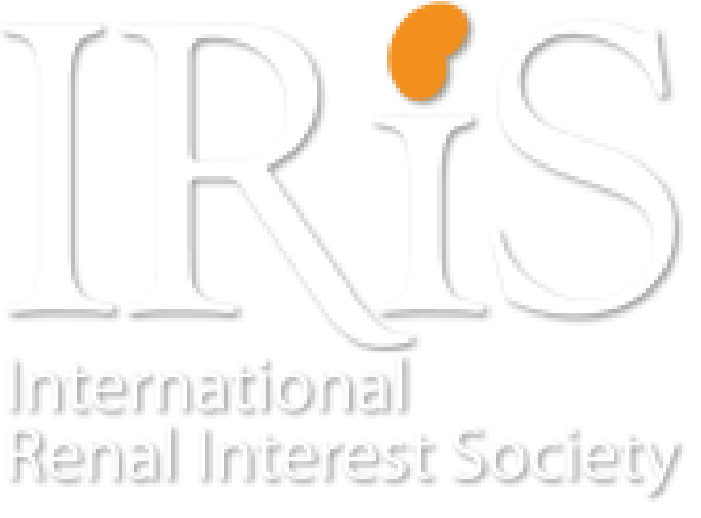
About IRIS
2006 IRIS Award Winner
Barrak Pressler DVM, PhD, Dipl. ACVIM
Assistant Professor, Department of Veterinary Clinical Sciences, Ohio State University

How did you first become interested in nephrology?
My interest in nephrology began in veterinary school in major part due to a current member of the IRIS board, Dr. Larry Cowgill. While a student at the University of California at Davis, Dr. Cowgill announced on the first day of our introductory small animal internal medicine course that the most diseased kidney in existence was still smarter than any of us sitting in the classroom. I took this as a personal challenge to master this organ system, and in the ensuing nine years Dr. Cowgill has only been proven correct again and again. During my senior clinical rotations I helped manage patients on the hemodialysis service with Dr. Cowgill, further increasing my interest in nephrology. Finally and most importantly, my mentor at North Carolina State University, Dr. Shelly Vaden, allowed me to collaborate and eventually lead studies in both clinical and basic science nephrology, and provided me with the foundation for becoming an independent clinical investigator.
What particular areas of Nephrology interest you?
Although I find all areas of nephrology fascinating, I am particularly interested in the pathogenesis, early diagnosis, and treatment of glomerular diseases in dogs, cats, and people. My basic science research program has been focused on identifying immunogenic proteins in animals and people with glomerular disease that could be initiators of disease; this work is based on a new theory of autoimmunity developed in the laboratory where I have been conducting my PhD work. Additional research interests include the possibility that autoantibodies specific for non-renal proteins may cause some glomerular diseases. I have explored the early diagnosis of glomerular disease by detection of microalbuminuria, and am continuing research into the significance of low urine albumin concentrations in various disease states.
How has the IRIS award helped you?
As a young investigator with a fledgling research program it can be difficult to obtain grant funding from extramural sources without having preliminary data to support my hypotheses. The IRIS award has provided me with the resources I need to perform initial experiments that will serve as the preliminary data for later larger studies. Specific studies I have used the IRIS award to fund include investigation of normal leukocyte populations in kidneys of dogs, searching for gene mutations in dogs with spontaneous renal cell carcinoma, and identification of autoantibodies in cats with hyperthyroidism and renal disease treated with antithyroidal drugs.
Research Interests
- Small animal nephrology and urology
- Canine and feline glomerular disease
- Glomerular filtration rate measurement
- Primary renal neoplasms and renal lymphoma
- Non-bacterial (algal and fungal) urinary tract infections
- Clinical and translational immunology
- Thionamide-induced anti-myeloperoxidase autoantibody formation in cats
- Innate immunity of the canine and feline urinary tract
- Renal disease-associated alterations in the peripheral lymphocyte repertoire
Studies of complementary proteins in people with glomerular disease.
Pressler BM, Pendergraft WF, Astern JM, Jennette JC, Falk RJ, Preston GA. Complementary proteins may play a role in the immunogenesis of anti-glomerular basement membrane disease. J Am Soc Nephrol 2005;16:210A (abstract).
Yang JJ, Pressler BM, Pendergraft WF, Nester CM, Jennette CJ, Falk RJ, Preston GA. Complementary PR3 peptide (cPR3138-169) triggers IFN-γ production by CD4+ T cells from patients with PR3-ANCA-disease. J Am Soc Nephrol 2005;16:7A (abstract).
Pressler BM, Pendergraft WF, Astern JA, Jennette CJ, Preston GA, Falk RJ. Evidence for autoantigen complementarity in anti-glomerular basement membrane disease. Twelfth International Vasculitis and ANCA Workshop. Heidelberg, Germany. June 2005 (abstract).
Astern JA, Pressler BM, Pendergraft WF, Trent CM, Jennette JC, Preston GA, Falk RJ. Evidence that complementary proteins may play a role in the immunogenesis of MPO-ANCA. Twelfth International Vasculitis and ANCA Workshop. Heidelberg, Germany. June 2005 (abstract).
Yang JJ, Pressler BM, Pendergraft WF, Nester CM, Jennette CJ, Falk RJ, Preston GA. Complementary PR3 peptide activates CD4+ cells from patients with PR3-ANCA-disease. Twelfth International Vasculitis and ANCA Workshop. Heidelberg, Germany. June 2005 (abstract).
Pendergraft WF, Pressler BM, Jennette JC, Falk RJ, Preston GA. Autoantigen complementarity: a new theory implicating complementary proteins as initiators of autoimmune disease. J Mol Med 2005;83:12-25.
Studies of urine albumin in dogs.
Pressler BM, Vaden SL, Jensen WA, Simpson D. Detection of canine microalbuminuria using semi-quantitative test strips designed for use in human urine. Vet Clin Pathol 2002;31:56-60.
Pressler BM, Proulx DR, Williams LE, Jensen WA, Vaden SL. Urine albumin concentration is increased in dogs with lymphoma or osteosarcoma. J Vet Intern Med; 2003;17:404 (abstract).
Pressler BM, Vaden SL, Jensen WA, Simpson D. Prevalence of microalbuminuria in dogs evaluated at a referral veterinary hospital. J Vet Intern Med 2001;15:300 (abstract).
Vaden SL, Pressler BM, Lappin MR, Jensen WA. The effects of urinary tract inflammation and sample blood contamination on urine albumin and total protein concentrations. Vet Clin Pathol 2004:33;14-19.
Studies of uncommon urinary tract pathogens in dogs.
Pressler BM, Gookin JL, Sykes JE, Wolf AE, Vaden SL. Urinary tract manifestations of protothecosis in dogs. J Vet Intern Med 2005;19:115-119.
Pressler BM, Vaden SL, Lane IF, Cowgill LD, Dye JA. Candida spp. urinary tract infections in 13 dogs and 7 cats-predisposing factors, treatment, and outcome. J Am Anim Hosp Assoc 2003;39:263-270.
Study of computed tomography of uroliths.
Pressler BM, Mohammadian LA, Li E, Vaden SL, Levine JF, Mathews KG, Robertson ID. In vitro prediction of urolith mineral composition using computed tomographic mean beam attenuation measurements. Vet Radiol Ultrasound 2004;45:189-197.
« Return to IRIS award winners